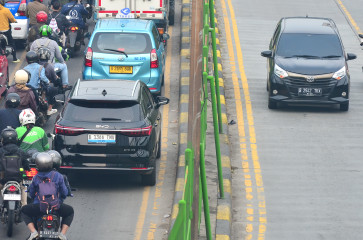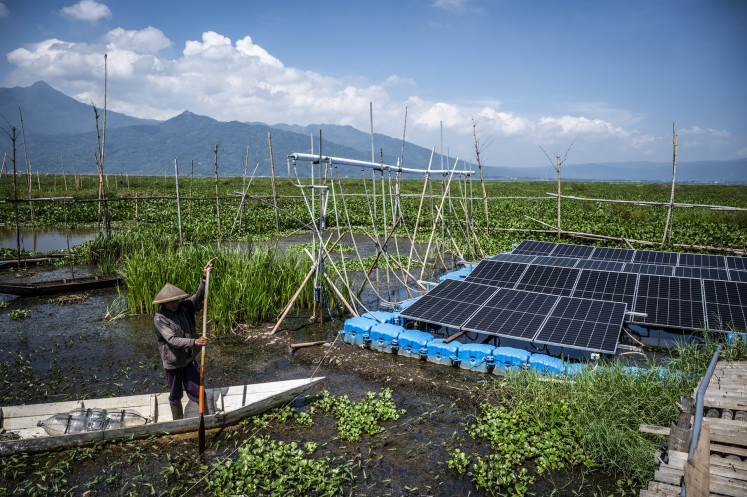Popular Reads
Top Results
Can't find what you're looking for?
View all search resultsPopular Reads
Top Results
Can't find what you're looking for?
View all search resultsIndonesia’s 2024 economic outlook: Thriving through transition
It is worth noting that at the same time, Indonesian regulators have successfully balanced their policies between ensuring stability and supporting growth.
Change text size
Gift Premium Articles
to Anyone
T
he Indonesian economy has once again proven to be a regional hotspot capable of dampening the effects of increased global volatility. In the last two years, it has been able to avoid a greater negative impact from rising risk coming from aggressive benchmark rate hikes for a longer period.
It is worth noting that at the same time, Indonesian regulators have successfully balanced their policies between ensuring stability and supporting growth. Thus, we saw many positive macro and financial figures in the Indonesian economy and banking sector last year: (1) economic growth that most likely ended the year at 5 percent, the fourth highest annual figure in Asia; (2) a low inflation rate of around 2.6 percent; (3) a stable rupiah, which ended the year at around 15,300 per US dollar and (4) loan growth, which may have reached 10 percent. These figures were very tough to maintain in the midst of much uncharted territory in the global economy.
We noted several key success factors that drove Indonesia’s positive performance last year: consistent, detailed and ahead-of-the-curve policies; persistent improvement in financial literacy and inclusive growth; downstreaming in several industries that supported Indonesia’s current account balance, especially from the metal-mining sector; and persistent support to maintain consumer purchasing power. This policy coordination boosted Indonesia’s post-pandemic growth and made it competitive with other emerging markets.
Now, entering the second week of 2024, how do we see the country’s economy compared to last year? Can it optimize the momentum from the biggest and longest election in national history? Let’s examine the major challenges we will face this year.
We believe that Indonesia will face relatively balanced opportunities and risks this year. First, challenges will still come from slower Chinese and United States economies while at the same time interest rates will stay high, at least through the first half of the year.
Currently, the domestic economy has started feeling the impact. Despite the resilience shown in the first half, signs of moderating growth have been showing up in various leading indicators. Trade performance has deteriorated along with the correction in commodity prices. Consumption remains strong in some areas (i.e., mobility spending and recreation), yet retail sales have been pressured. Some of the export-oriented manufacturing sectors are affected by the large economic slowdown, most of them coming from labor-intensive industries.
On a positive note, Indonesia’s strong domestic basis should still be able to cushion the economy from the downturn. Although there are not many catalysts next year, national election spending can provide somewhat of a boost to private consumption growth. The government has allocated Rp 76.6 trillion (US$4.93 billion) for 2023 and 2024, substantially higher than in past elections, given the larger election scale this time.
Your Opinion Matters
Share your experiences, suggestions, and any issues you've encountered on The Jakarta Post. We're here to listen.
Thank you
Thank you for sharing your thoughts. We appreciate your feedback.


















